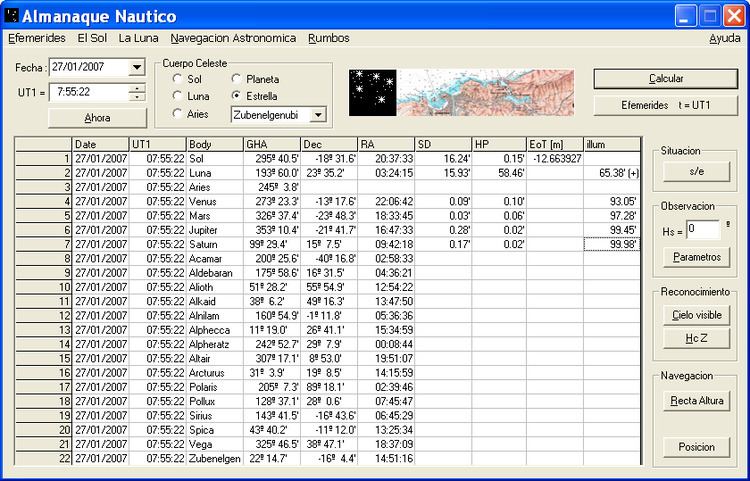 | ||
Navigational algorithms is a source of information whose purpose is to make available the scientific part of the art of navigation, containing specialized articles and software that implements the various procedures of calculus. The topics covered are:
Contents
- Advanced navigation
- Basic marine navigation
- Navigation shareware
- Nautical Almanac
- CelestialFix
- Magnetic declination
- References
Advanced navigation
Include articles about piloting and astronavigation: Corrections for sextant altitude, Sight Reduction with calculator-Form & Plotting sheet for celestial LoPs, Celestial Fix - 2 LoPs, Celestial Fix - n LoPs NA Sight Reduction algorithm, Vector equation of the Circle of equal altitude, Vector Solution for the intersection of two Circles of Equal Altitude, Sight Reduction - Matrix solution.
Basic marine navigation
Include papers about introduction to navigation, tides, naval kinematics, weather and oceanography
Navigation shareware
This section gives a brief description of the free programs available for navigation. Run under Windows XP, (maybe under 95/98/2000/NT)
Nautical Almanac
Ephemerides of the celestial bodies used in navigation.
CelestialFix
Astronavigation solution for sight reduction for n observations made with a marine sextant & running fixes
The algorithms implemented are: For n = 2 observations
For n ≥ 2 observations
Magnetic declination
Any measure of course made with a magnetic compass must be corrected because of the magnetic declination or local variation.
